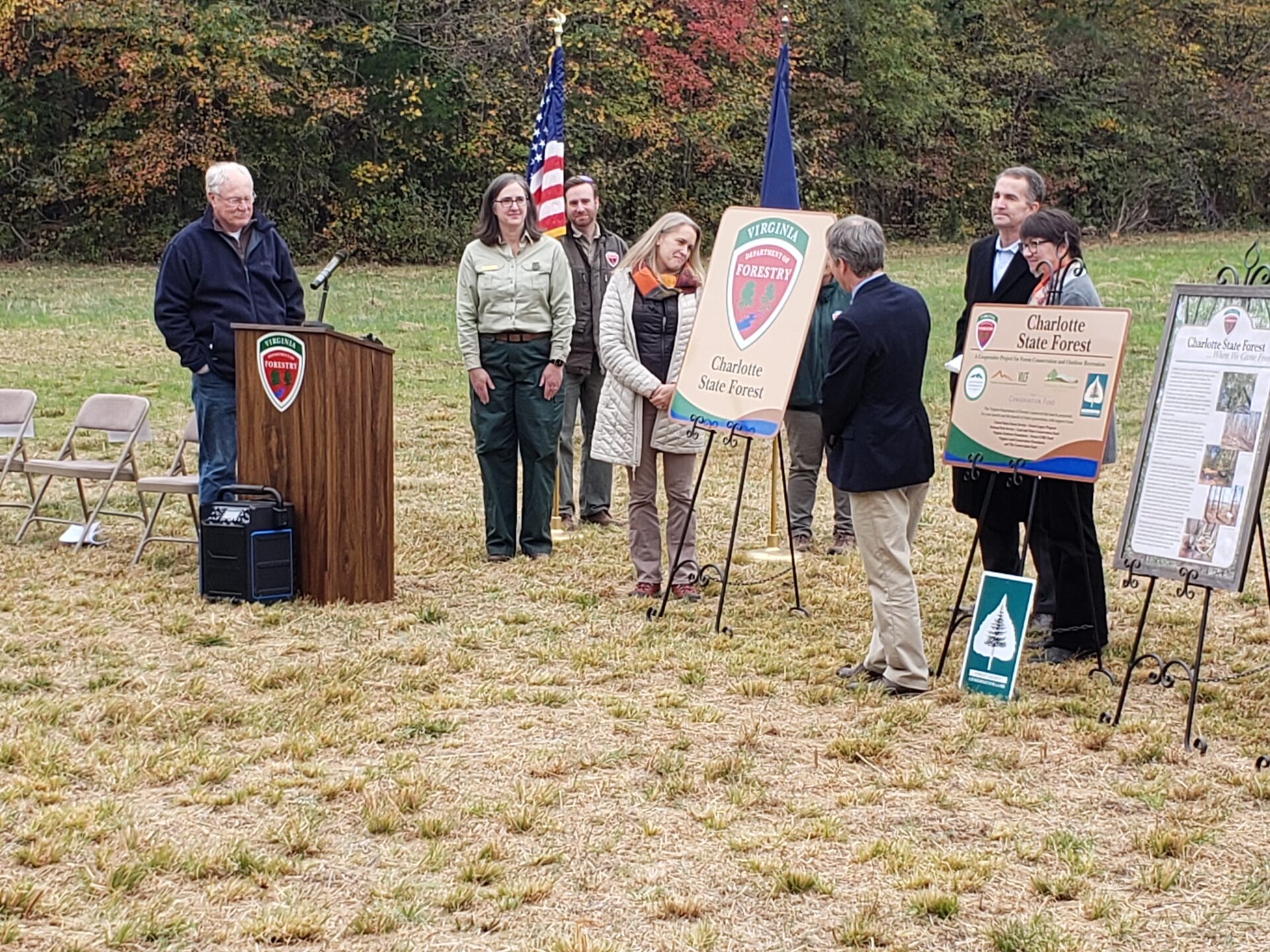
CHARLOTTE COUNTY—Governor Ralph Northam recently announced the dedication of the Charlotte State Forest, opening the first publicly-accessible state land in Charlotte County. The 5,004 acre state forest is Virginia’s 26th state forest in the Commonwealth. The Virginia Department of Forestry will sustainably manage the forest under Sustainable Forestry Initiative and American Tree Farm Standards, conserving key habitat areas and providing new public access to outdoor recreation activities.
“Virginia’s state forests are critical to preserving environmental sustainability and a strong economy across the Commonwealth,” said Governor Northam. “Charlotte State Forest will conserve wildlife habitats, enhance water quality, provide recreational opportunities for the public and support local economies. We look forward to enjoying this new outdoor asset.”
The forest was owned by Governor Thomas B. Stanley, who served from 1954 to 1958, and the Stanley Land and Lumber Corporation prior to The Conservation Fund’s purchase in 2019. It was used to provide shortleaf and Virginia pine, as well as white oak and hickory, to local mills for furniture.
Virginia’s forests contribute $21 billion annually to the economy and employ more than 108,000 workers. Charlotte County is located within the state’s highest timber producing region. The river, stream and wetland resources on these forests drain into Kerr Lake, which provides drinking water to nearly 500,000 residents in Virginia and North Carolina.
“As Virginia’s third largest industry, forestry plays an essential role in Virginia’s economy,” said Secretary of Agriculture and Forestry Bettina Ring. “Close collaboration between the Virginia Department of Forestry, The Conservation Fund, the Stanley family, and other public and private partners made this important acquisition possible and will ensure that it is sustainably managed for current and future generations.”
“This property is a very special place. Its legacy of sustainable management for both timber and wildlife habitat, combined with its important water resources have made it an important location here in Charlotte County,” said State Forester Rob Farrell. “Today we celebrate the future of Charlotte State Forest, its continued sustainability, its contribution to Virginia’s economy, and its importance to the many individuals and families who will have the opportunity to enjoy recreational activities here.”
“Ensuring the integrity of large forested landscapes and keeping them in sustainable management is one of the most important conservation strategies today,” said The Conservation Fund Virginia State Director Heather Richards. “By continuing the legacy of three generations of the Stanley family and the Stanley Land and Lumber Corporation and creating Virginia’s newest State Forest, we are safeguarding the forest’s ability to provide vital climate, economic and ecological benefits for generations to come. We are grateful to our partners in the Commonwealth and the U.S. Forest Service, support from Virginia’s U.S. Congressional delegation, and funding from the federal Land and Water Conservation Fund and the Richard King Mellon Foundation. Together, we made this wonderful outcome possible.”
To acquire the forestland from The Conservation Fund, the Virginia Department of Forestry leveraged federal, state and private funding through the USDA Forest Legacy Program, the federal Land and Water Conservation Fund, agency mitigation funds, and additional Land and Water Conservation Fund Stateside grant funding.
“The United States Forest Service is pleased to support and partner with the Virginia Department of Forestry to protect this important and historic working forest that will provide wildlife habitat, abundant recreational opportunities, and timber resources through ongoing sustainable management,” said Southern Regional Forester Ken Arney. “Forest Legacy projects can take several years to accomplish and require a high degree of commitment from partners and landowners. We applaud the amount of work that went into making this happen.”
